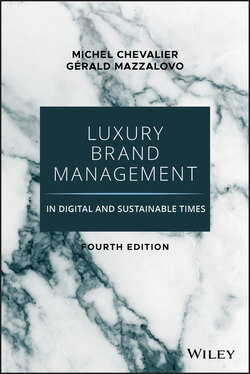Читать книгу Luxury Brand Management in Digital and Sustainable Times - Michel Chevalier - Страница 44
Financial Characteristics
ОглавлениеIn studying the different luxury companies, and as we will confirm later in this book, it quickly becomes noticeable that a significant number of them are losing money. In any other industrial sector, a firm losing money is rapidly eliminated, merges with its competitors, or goes bankrupt. In the luxury-goods industry, there are brands that have been losing money for 5 or even 10 years and that survive as part of a luxury group or as a diversification within another industrial company. Bic, the writing-instruments group, owned the Guy Laroche company for a very long time and probably lost money for more than 10 years in a row before it took steps to sell out. Charles Jourdan also lost money for many years when it belonged to its previous owners (the proprietors of a large Swiss cement company). Christian Lacroix apparently never generated profits while it was in the LVMH Group and before it was sold and then ended up in bankruptcy.
Why would intelligent and reasonable executives continue to accept losing money for so long? There are probably two reasons for this: the first entails the value of the brand. Despite losing money for many years, Guy Laroche and Carven remain very attractive to consumers, and there is a tremendous brand awareness. The second reason is that successful brands are so successful and so profitable that they can compensate for many years of losses. In 1994, the research group Eurostaf conducted a study of luxury ready-to-wear companies in France. This study found that Chanel, taken alone, was more profitable than the rest of the sector combined. Of the 14 companies investigated, 10 were losing money. The fact that Chanel was so profitable could lead any other brand to think that it too had the potential to develop and generate similar returns for shareholders. Furthermore, luxury brands are a very productive path that can lead to becoming a lifestyle brand, which, in turn, can lead to enormous growth capacity through product extension. We will look more closely at this phenomenon in Chapter 6.
In this respect, the luxury business is a kind of jackpot business; not because it is unpredictable and things come only by chance, of course, but because those that are profitable become extremely profitable.
This incredible spread between unprofitable and extremely profitable companies seems to be the result of two peculiarities. First, the luxury business is a very high break-even business. Second, cash needs are quite limited.
